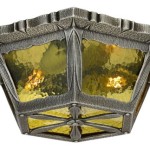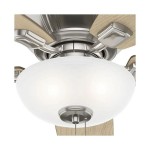Essential Aspects of Hampton Bay Ceiling Fan Light Bulbs Replacement
Ceiling fans, often adorned with illuminating light bulbs, play a pivotal role in enhancing the aesthetics and functionality of our homes. Among the leading manufacturers, Hampton Bay stands out with its wide selection of ceiling fans, each requiring specific light bulbs to ensure optimal performance and longevity. Understanding the essential aspects of Hampton Bay ceiling fan light bulbs replacement is paramount to maintaining the fan's functionality and overall beauty.
This comprehensive guide delves into the crucial factors to consider when replacing Hampton Bay ceiling fan light bulbs, empowering you with the knowledge and confidence to undertake this task seamlessly. From understanding the different bulb types and wattages to selecting the right size and shape, we cover every essential aspect to ensure a successful replacement.
1. Bulb Type
Hampton Bay ceiling fans accommodate various bulb types, each offering unique advantages. Incandescent bulbs, known for their warm, traditional glow, are a cost-effective option. LED (Light Emitting Diode) bulbs, on the other hand, boast superior energy efficiency and longer lifespans, making them a more eco-friendly and economical choice in the long run.
2. Wattage
The wattage of the bulb determines its brightness. Higher wattage bulbs emit brighter light, while lower wattage bulbs provide a softer, more ambient illumination. The appropriate wattage depends on the size of the room and the desired level of brightness. Refer to the manufacturer's recommendations or consult a qualified electrician for guidance.
3. Size and Shape
Hampton Bay ceiling fans utilize bulbs of specific sizes and shapes to fit snugly into the fan's light fixture. Common bulb shapes include A19 (standard bulb), BR30 (reflector bulb), and T10 (tube bulb). The size and shape of the bulb should correspond with the designated socket on the fan.
4. Color Temperature
The color temperature of a light bulb refers to the perceived warmth or coolness of the emitted light. Measured in Kelvins (K), lower color temperatures (e.g., 2700K) produce warmer, yellowish light, while higher color temperatures (e.g., 5000K) emit cooler, bluish light. Select the color temperature that best suits the ambiance and decor of the room.
5. Dimmability
Some Hampton Bay ceiling fans allow for light dimming, enabling you to adjust the brightness to create different moods and atmospheres. When selecting replacement bulbs, ensure they are compatible with the fan's dimmer switch. Some bulbs are specifically designed for use with dimmers to ensure smooth and flicker-free operation.
Conclusion
Replacing Hampton Bay ceiling fan light bulbs is a straightforward task when armed with the right knowledge and tools. By considering the essential aspects outlined above, you can confidently select and install suitable light bulbs that enhance the functionality and aesthetics of your home. Whether you prefer the warm glow of incandescent bulbs or the energy efficiency and longevity of LED bulbs, the perfect replacement bulbs await your choice.

4 Ways To Replace A Light Bulb In Ceiling Fan Wikihow

Private Brand Unbranded Windward Iv Ceiling Fan Replacement Glass Bowl 082392053475 The Home Depot

Swap To Brighter Led Light In Ceiling Fan Doityourself Com Community Forums

Universal Ceiling Fan Remote Control Kit Replacement For Harbor Breeze Hunter Hampton Bay Litex 3 Sd Light Dimmer With Receiver Fan28r Replace 53t 2aazpfan 11t Kujce9103 Uc7030t Com

Hampton Bay Gazebo Iii 52 In Indoor Outdoor Wet Rated Brushed Nickel Ceiling Fan With Led Bulbs Included Yg836a Bn The Home Depot

Hampton Bay Part 37530 52 In Energy Star Indoor Outdoor Led Brushed Nickel Ceiling Fan With Light Kit Fans Home Depot Pro

Hampton Bay Riley 44 In Indoor Led Brushed Nickel Ceiling Fan With Light Kit 5 Quickinstall Reversible Blades And Remote Control 52144 The Home Depot

Need Assistance With Light Bulb R Askelectricians

4 Ways To Replace A Light Bulb In Ceiling Fan Wikihow

Hampton Bay Light Kit Not Working R Askelectricians
Related Posts








